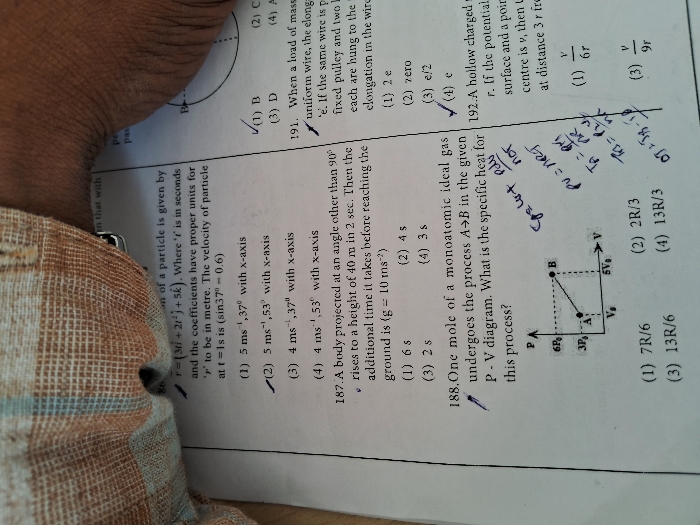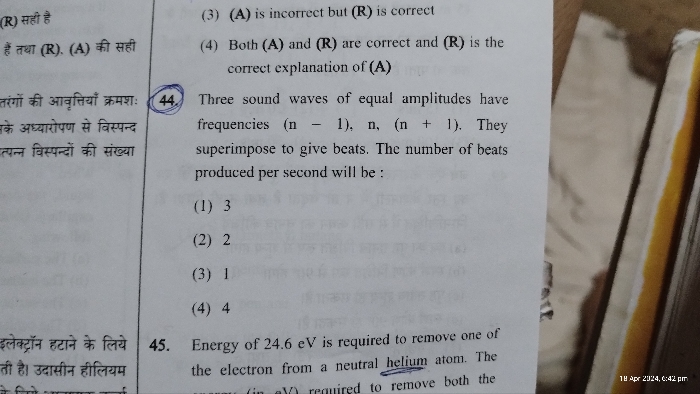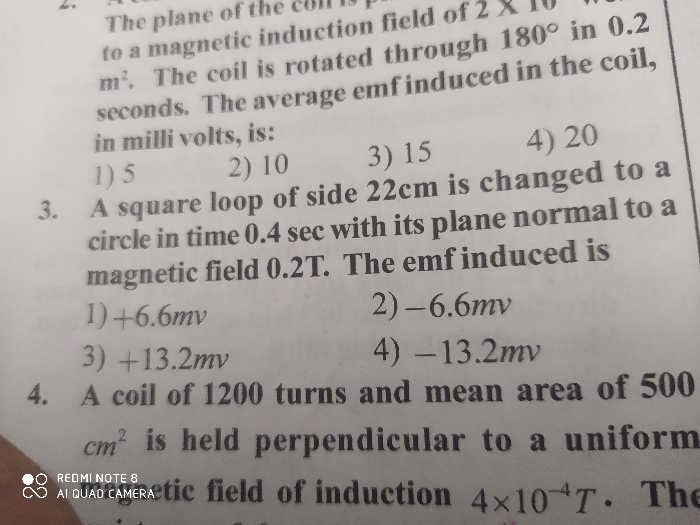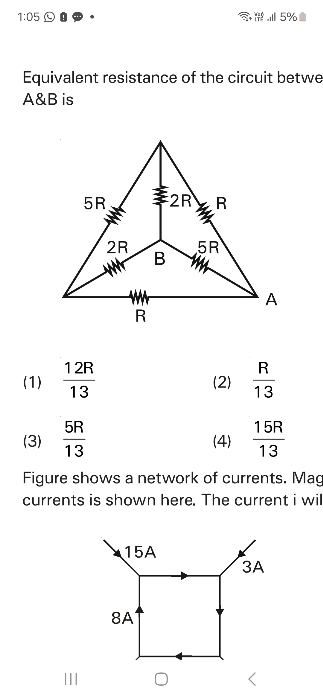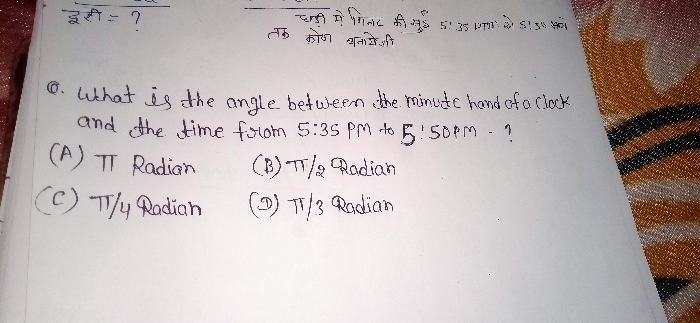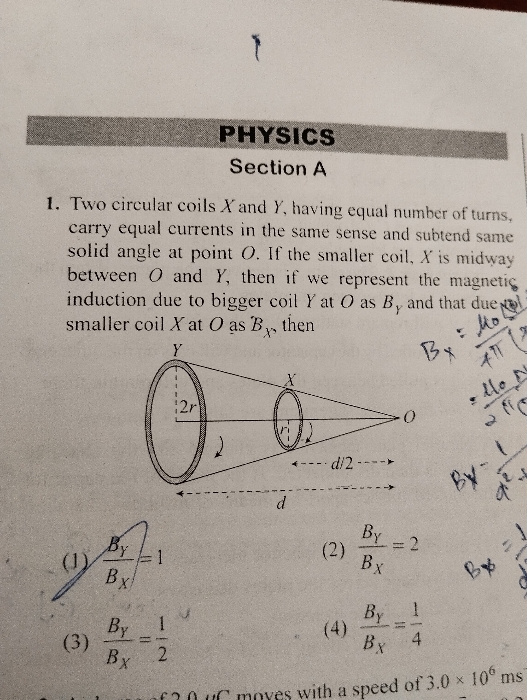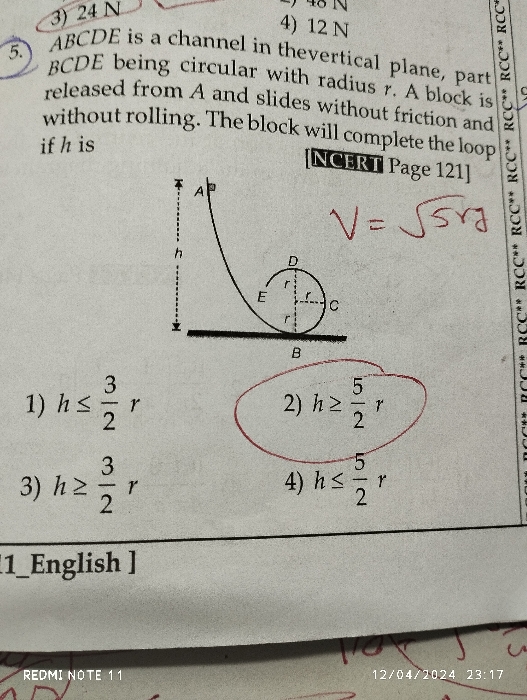NEET Class neet Answered
Find relation between potential energy and kinetic energy at height x.【graph}】
☑️Refer to attachment
⭕️ Help me in this.....Thanks☺️
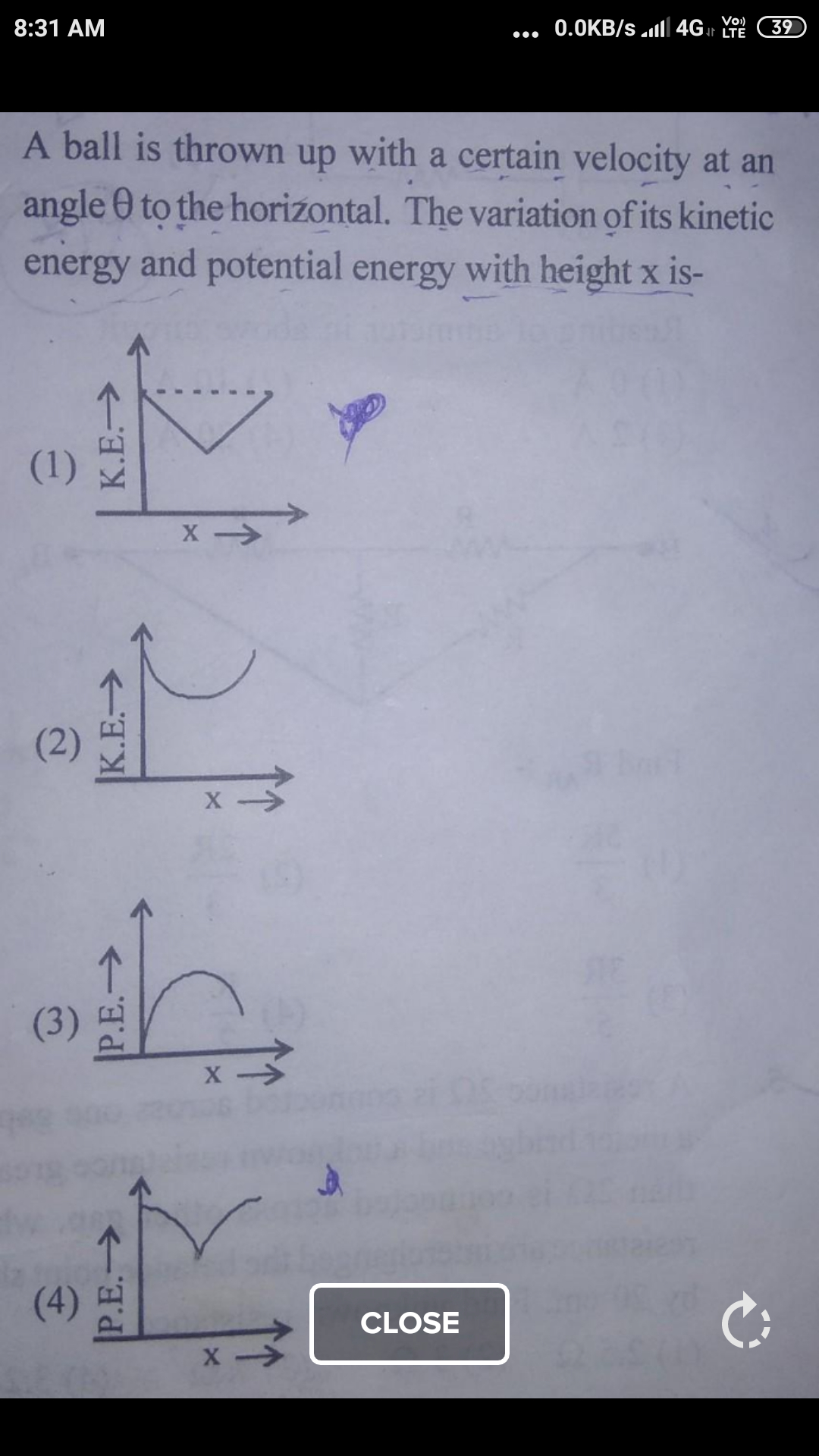
Asked by jhajuhi19 | 05 Jul, 2019, 08:51: AM
Potential energy PE of a particle undergoing projectile motion as a function of height h is given by, PE = m×g×h .........................(1)
where m is mass, g is acceleration due to gravity and h is height above projection point.
Kinetic energy KE of a particle undergoing projectile motion as a function of height h is given by, KE = (1/2)m×u2 - (m×g×h) .................(2)
It can be seen from eqn.(1) and (2), PE and KE are linear function of h .
PE strats from 0 at projection point and increases at constant rate to maximum value at maximum height.
KE strats from maximum value at projection point and decreases at constant rate to zero at maximum height.
None of the graphs given in the question shows the above mentioned nature of variation for PE and KE.
---------------------------------------------------------------------------------------------------------------------------------
Normally, variable X is used for horizontal distance, not for height.
Hence I guess, intention of the question is to get PE and KE as a function of horizontal distance X but not of vertical distance h .
If we assume, it is required to get PE and KE as a function of horizontal distance X, the answer is explained below.
Potential energy PE = m×g×h = m×g×( u sinθ × t - (1/2)×g×t2 ) .......................(3)
In eqn.(3), we used the relation for vertical distance h travelled for projectile motion. u is initial projection velocity,
θ is angle of projection and t is time when the particle reaches the height h.
Horizontal distance x travelled by the ball, X = ( u cosθ ) t .................(4)
If we eliminate time t in eqn.(3), using eqn.(4), we get , PE  .......................(5)
.......................(5)
 .......................(5)
.......................(5)Eqn.(5) is inverted parabola about vertical axis , if X is chosen as horizontal axis.
Hence Graph(3) shows this behaviour for potential energy
Kinetic energy KE = (1/2) m×u2 - m×g×h =  ...........................(6)
...........................(6)
 ...........................(6)
...........................(6)Eqn.(6) is parabola about vertical axis , if X is chosen as horizontal axis.
Hence Graph(2) shows this behaviour for kinetic energy
Answered by Thiyagarajan K | 05 Jul, 2019, 03:14: PM
Application Videos
NEET neet - Physics
Asked by ramanjaneyuluoguru | 25 Apr, 2024, 04:18: PM
NEET neet - Physics
Asked by shatakshibhatt9 | 20 Apr, 2024, 07:52: PM
NEET neet - Physics
Asked by praveenpriya000079 | 18 Apr, 2024, 07:24: AM
NEET neet - Physics
Asked by gouranshi84 | 17 Apr, 2024, 05:23: PM
NEET neet - Physics
Asked by sojusvi | 17 Apr, 2024, 01:12: PM


